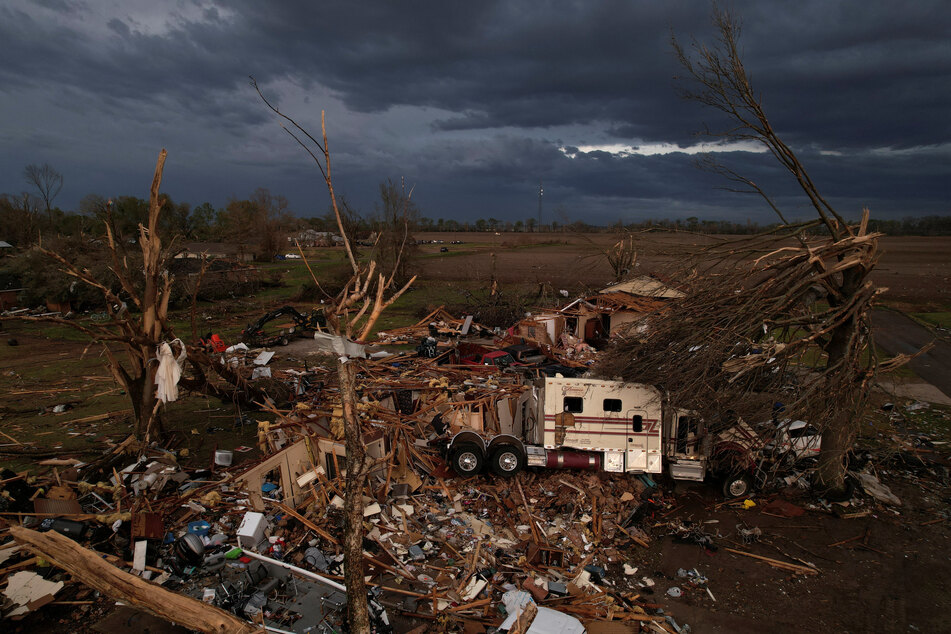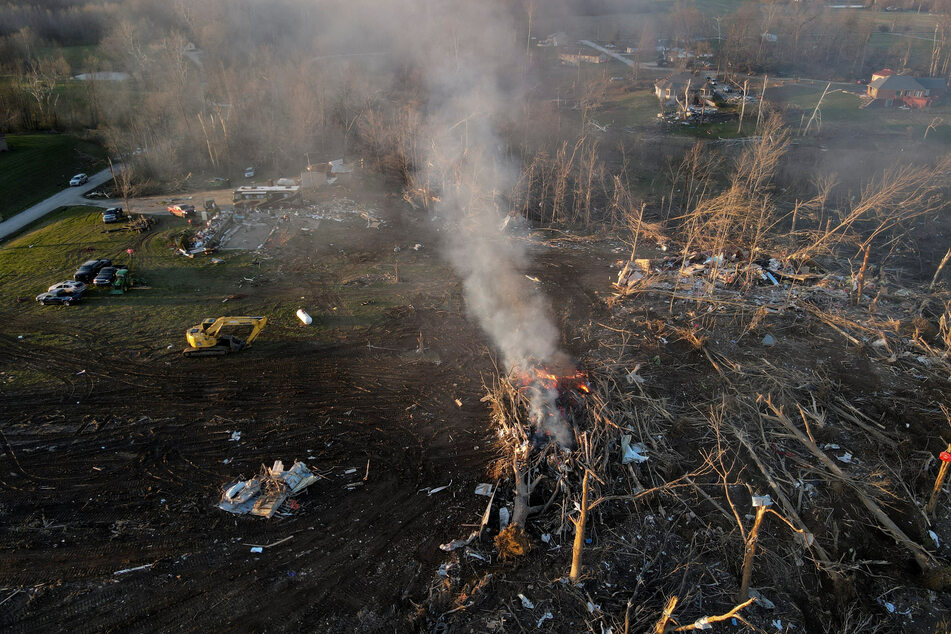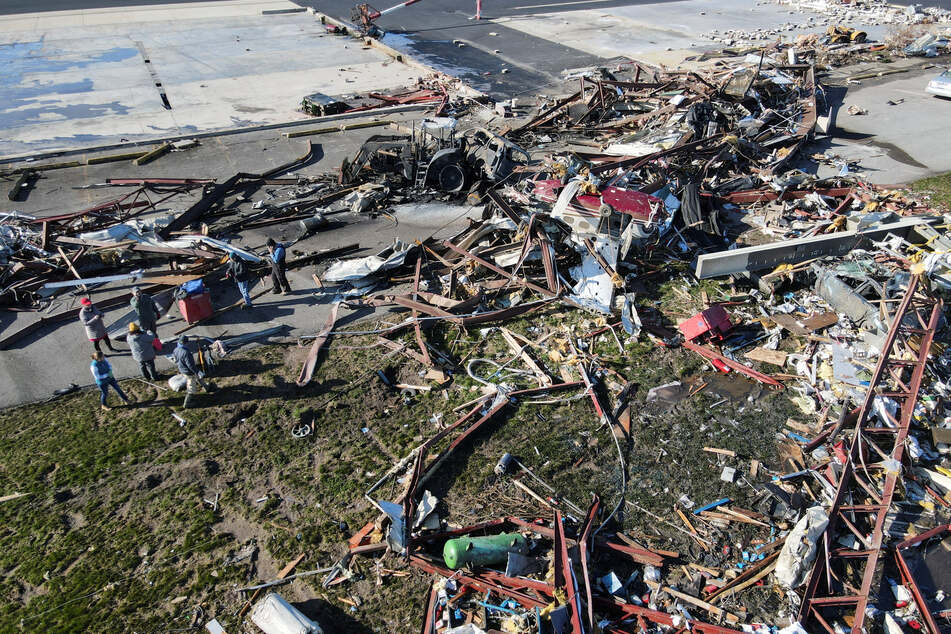US tornado season is starting sooner and lasting longer, experts say
Naperville, Illinois - Although the role of climate change in tornadoes is not fully understood, researchers say locations are shifting, the season is lengthening, and the number of tornadoes in a single event is increasing.

"That’s a really, really big deal for human exposure and vulnerability," Gensini said. "A tornado that goes through a wheat field in Kansas is not a big deal, but a tornado that goes through southern Cook County is a huge deal."
On Friday, a devastating tornado tore through Mississippi, leaving at least 25 dead and dozens injured or missing. The small, rural town of Rolling Fork was nearly wiped out. This tornado was rare because it carved a path nearly 60 miles. According to a Washington Post report, less than 1% of tornadoes travel more than 50 miles.
On December 10, 2021, another unusual tornado stayed on the ground for 165 miles in Kentucky. That tornado and several others left at least 88 dead in five states, six of them in Illinois.
Tornado season starting sooner and lasting longer

In addition to seeing more tornadoes in new areas, Gensini said data shows tornado season is starting sooner than usual and lasting longer into the fall and winter months.
In Illinois, two tornadoes in February, one in Naperville and another in Champaign County, took residents by surprise. These events don’t typically happen in February, though experts say tornadoes have the potential to form anytime.
Illinois has averaged 54 tornadoes a year based on data collected from 1991 through 2020, according to the Illinois state climatologist.
The Enhanced Fujita scale, or EF scale, measures the intensity of a tornado on a scale of 0 to 5, based on the amount of damage caused, which is also used to estimate the wind speed. The Plainfield tornado, which ranks as an EF-5, packed 200-plus-mph winds and was one of the worst in Illinois history.
"We have seen an increase in severe weather in Illinois, specifically tornado activity," said Kevin Sur, public information officer for the Illinois Emergency Management Agency. "Tornadoes can happen at any time and anywhere. Metro/urban areas are not immune to tornadoes as several tornadoes have been identified within city limits of Chicago."
Climate change drives changes in tornado patterns

Harold Brooks, a research meteorologist at NOAA with a doctorate from the University of Illinois Urbana-Champaign, said the United States sees roughly 500 EF-1 or greater tornadoes per year.
When including EF-0 tornadoes, in which there is little damage and winds are less than 86 mph, the country averages roughly 1,200 tornadoes annually, according to the National Weather Service.
Typically, cold fronts move through the center of the United States and into the Gulf of Mexico. When a cold front mixes with warm, moist winds from the south and creates a thunderstorm, spinning air currents within the storm can lead to a tornado.
A warming atmosphere could mean more moisture and instability, resulting in more energy for tornado formation. But some research suggests that wind shear, the change in speed and direction with elevation, could decline. There is also concern that climate change could alter the tornado season, especially in the winter months when wind is plentiful as the polar jet stream dips into the Midwest.
Last week, the UN Intergovernmental Panel on Climate Change released a report that found the planet is unlikely to be on track to meet its most ambitious climate target – limiting warming to 2.7 degrees Fahrenheit above preindustrial temperatures – by the early 2030s. More extreme weather, such as flooding, drought, and severe storms, is expected as the planet warms.
Residents in tornado-prone areas urged to take caution

Gensini said there are very few areas of the United States that don’t have the potential to see tornadoes. Referring to future projections and trends of the past 50 years, Gensini said the Great Plains will likely continue to get drier and more arid, and severe weather will shift away from that area into the North and East.
He emphasized that even if there aren’t that many more tornadoes, the movement of those that do occur to more densely populated areas as a result of climate change would be detrimental.
"Let’s say we have two times as many tornadoes in the future due to climate change," Gensini said. "That’s pretty amazing, but if they’re all happening in western Kansas, is it really that big of a societal issue? Humans continue to grow, our cities continue to sprawl and the dart board continues to grow in terms of the likelihood of being hit by a tornado."
Born and raised in the Midwest, John Sergeant, chief of emergency medical services at the Naperville Fire Department, stays prepared by keeping flashlights, spare batteries, and extra shoes in his basement, where his family knows to go in the event of severe weather.
As a reminder, Sergeant said residents shouldn’t necessarily rely on tornado sirens to alert them to impending storms. He said the sirens were designed as an outdoor warning but were not made to be heard indoors.
Additionally, given that sirens may only provide a few minutes of preparation time, Sergeant recommends using a weather radio as the tried-and-true method for getting updates from the National Weather Service and more immediate notifications for imminent tornado activity.
"Normally, we can see big storms developing, and we can give people at least 30 minutes warning of a severe thunderstorm,"Sergeant said. "(Weather radios) are as important as a smoke detector in a house. At least then, we’re only dealing with damaged property and not necessarily people injured severely."
Cover photo: REUTERS